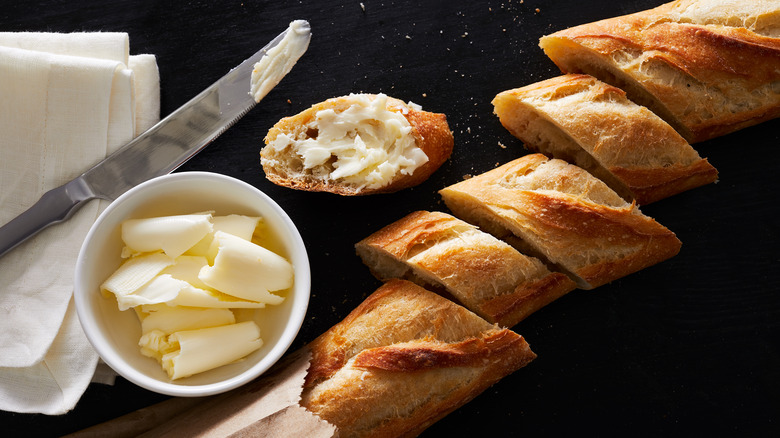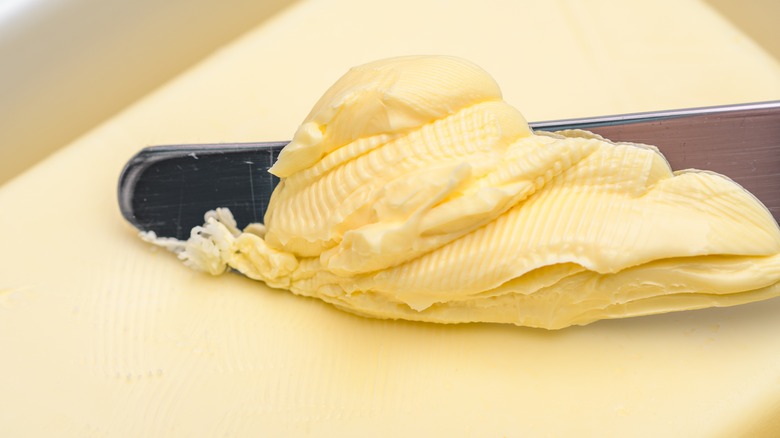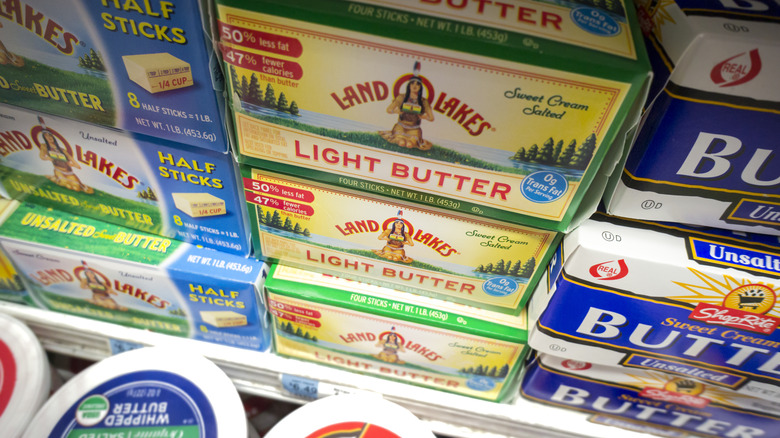Does Butter Always Actually Taste Better At Restaurants?
Have you ever enjoyed something at a restaurant that made you think, "I could totally make this"? Not everyone can be a gourmet chef and whip up five-star dishes from the comfort of their own home, but some seem easy enough to DIY. Take for example, simple bread and butter. It is a common belief that butter tastes better at restaurants. A serving of bread brought to your table for you to nibble on before your meal arrives always seems to have a side of spreadable butter that perfectly complements the contents of the bread basket. But when you attempt the same appetizer at home, something just doesn't feel the same. You could easily chalk it up to atmosphere: They say that food tastes better when it's free, which is often the case when you score a pre-meal basket of bread and butter. It could also be that you are enjoying the relief of having food prepared for you, unlike snacks and meals at home where you have to work (and pay) for your bread, butter, and everything else.
Yes, the butter you enjoy at a restaurant is not the same as the one sitting in your fridge. Many factors play into the differences between store-bought butter and the butter you enjoy tableside at your favorite restaurant, including the fat content in the butter, how it is stored, and how it is prepared for spreading and cooking.
Restaurants take extra good care of their butter
Sadly, you may not have easy access to the types of butters that you are experiencing at your favorite restaurants. Professional baker Luke Ilardo told Reader's Digest that higher butterfat levels are likely the reason that your at-home butter tastes slightly less fancy. While most grocery stores only carry butters with up to 80% butterfat, Ilardo shared that restaurants "can pretty easily find up to 86% butterfat. The higher butterfat will lend to a richer butter." It could be that your at-home butter doesn't quite measure up simply because of its butterfat content, which enriches the smooth texture and rich flavor.
Butter is not an afterthought at sit-down eateries the way it may be at home. Chefs often season their butter before it makes its way to your table. The butter on top of a freshly grilled steak is brimming with herbs and seasonings that were added after the dollop was scooped and placed. Many restaurants will also add extra finishing salt to their dishes for that extra burst of flavor. If you're hoping to achieve high-end butter at home, consider infusing it with other ingredients. Just like the upscale restaurants that offer creamy pesto butter or browned butter with an extra hint of smoky sweetness, you too can make your own infused butter at home. Simply add spices, herbs, and even chopped ingredients like bacon to a mixer to whip up a flavored butter better than you've ever imagined.
Up your at-home spreads with these butter storage and prep hacks
Restaurants go through butter at much faster rates than the average home. Therefore, they can afford to leave butter out to soften before serving. However, butter can easily go bad and start to taste funny if you don't store it properly. When butter is exposed to oxygen for too long, its flavor, color, and texture can change. To combat this, make sure to store your butter in an airtight container after opening. If you plan to keep your butter fresh for longer than a week, you should probably store it in the fridge. After one week of sitting out, even with the proper storage, your butter will start to turn. Keep your spread stored at the coldest part of your fridge (usually at the back) to maintain freshness. Food safety specialists also recommend refrigerating unsalted and whipped butters at all times. If you prefer your butter kept at room temperature, self-proclaimed butter experts on Reddit recommend buying smaller quantities to keep it from going bad and being thrown out. You can also splurge for the fancy, imported butters at the grocery store like Kerrygold, Lescure, and Bordier; but expect to pay a heftier price for these.


